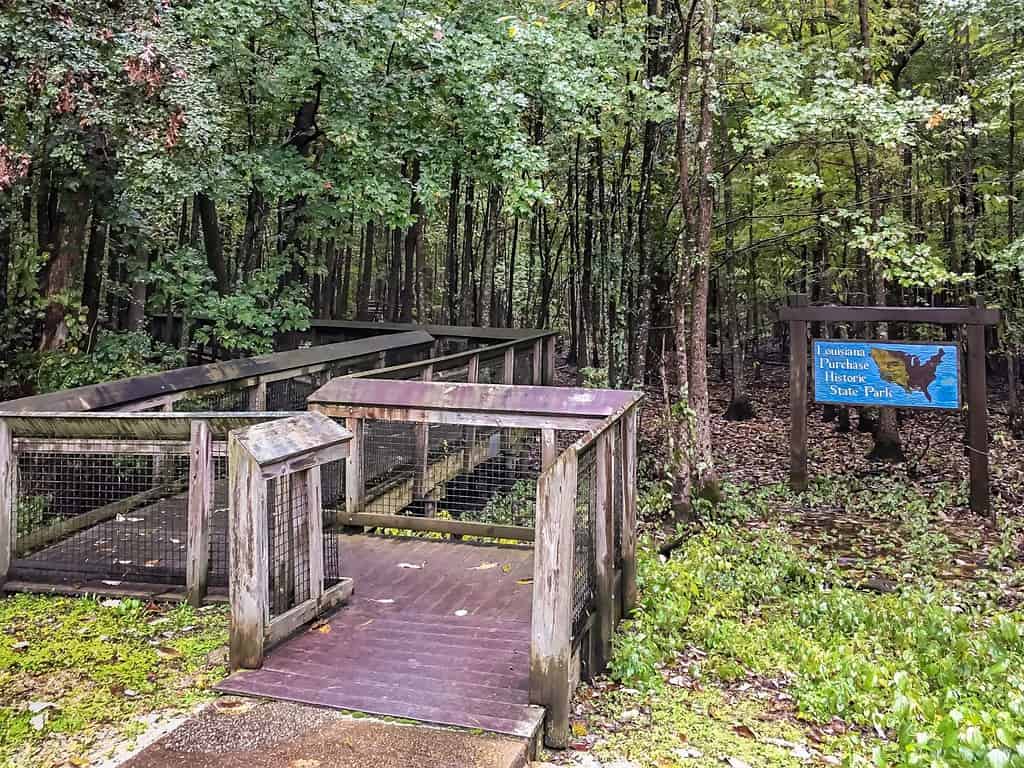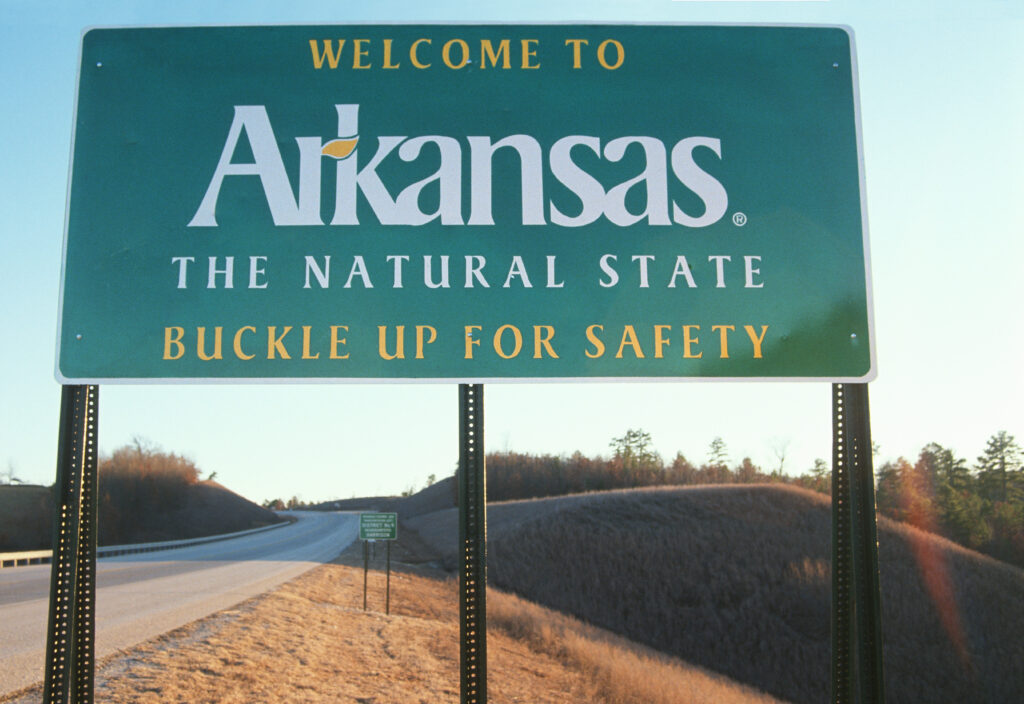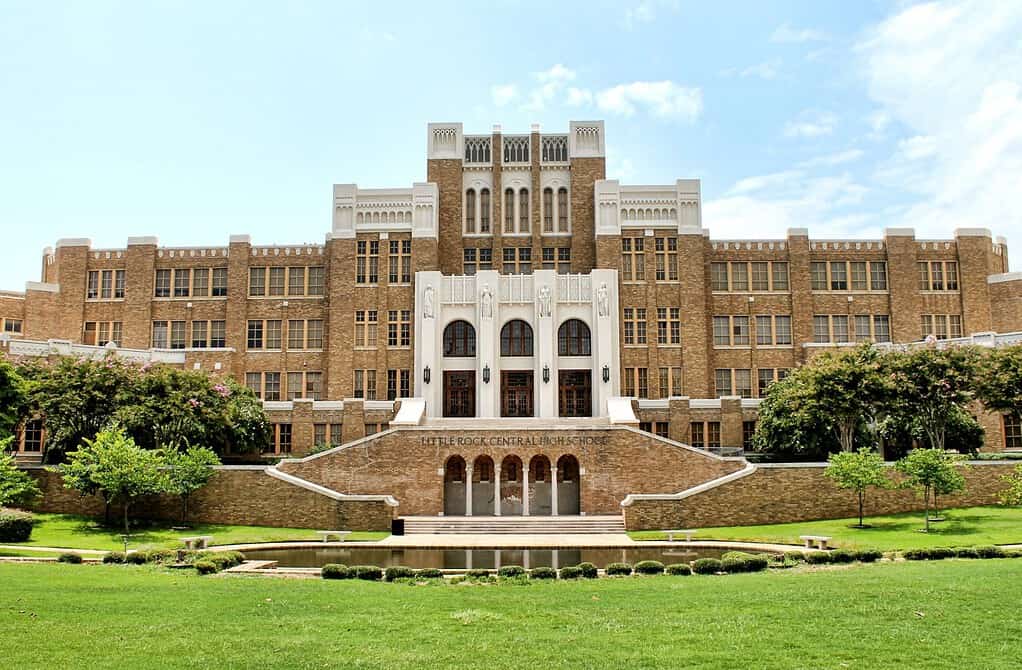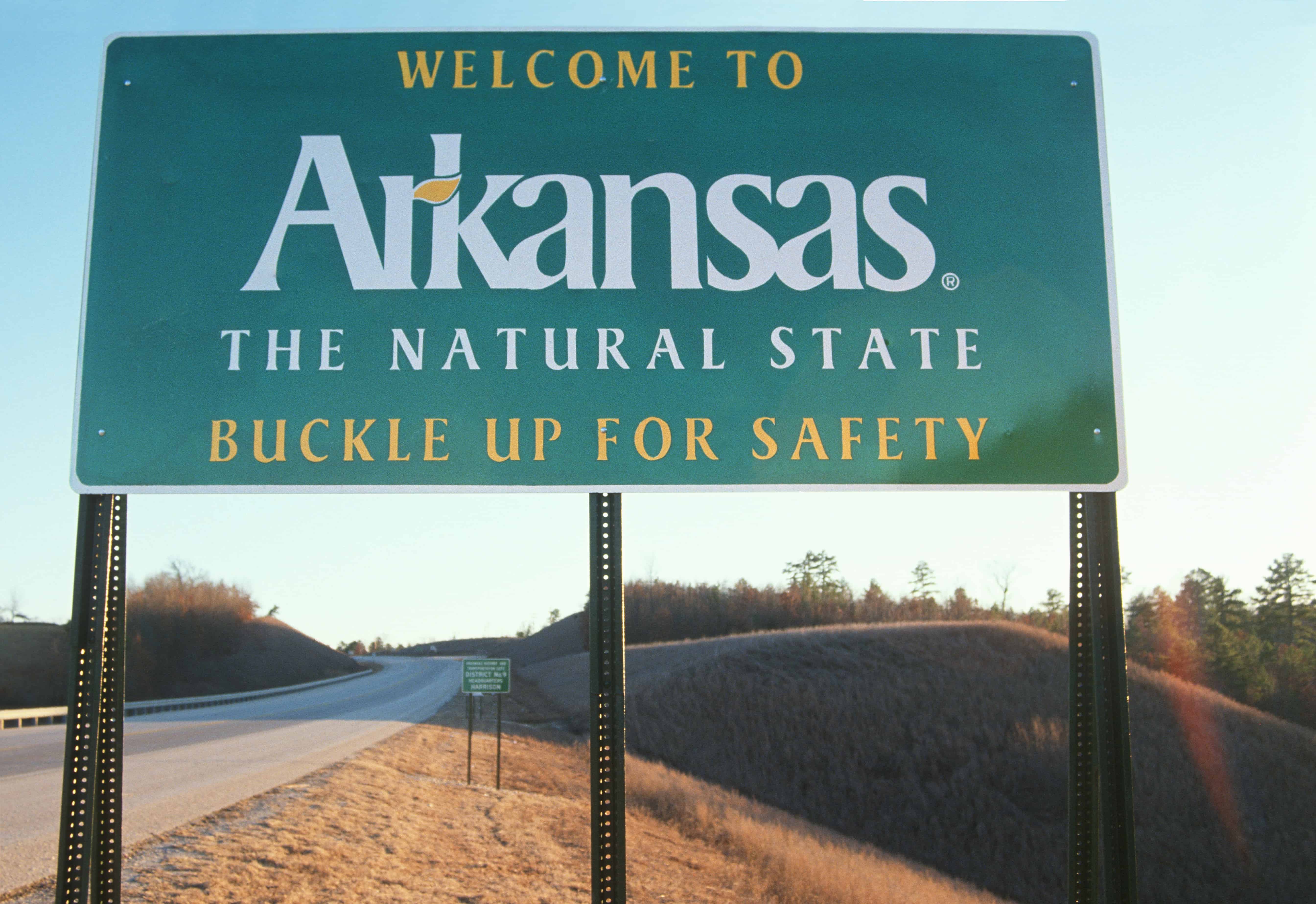Arkansas is a state full to the brim with history and culture. Whether you’re a local or someone planning to take a trip to this state in the near future, you might be wondering what National Historic Landmarks are worth visiting. Although every one of them is unique and significant in its own way, some stand out among the rest. Here are six of the best National Historic Landmarks in Arkansas that are absolute must-see destinations.
1. Bathhouse Row

About 1.5 million people visit Bathhouse Row each passing year.
©Kat Byrd I/Shutterstock.com
Bathhouse Row is an iconic National Historic Landmark located in Hot Springs National Park in Arkansas. As its name suggests, Hot Springs National Park is famous for its natural hot springs which many believe to be medicinally significant. The history of this site began in the 1800s when tourism surrounding these natural springs began to boom with popularity. Many people visited in hopes that the special waters would cure them of their ailments. However, this industry saw a steep decline as modern medicine improved. By the mid-1900s, the hype surrounding this location began to die down significantly. Despite this, Bathhouse Row remains a popular tourist destination in the modern day. There are several bathhouses located on this property, and just as many people visit today for the rich history of this location as they do to have a relaxing spa day.
2. The Beginning Point of the Louisiana Purchase Land Survey

The land acquired through the Louisiana Purchase cost America roughly 15 million dollars in 1803. In today’s money, this is equal to roughly 409.4 million dollars.
©Steve Lagreca/Shutterstock.com
The Louisiana Purchase is an incredible part of American history. Without this event occurring, 530,000,000 acres of the country as we know it would not be a part of the union today. The Louisiana Purchase Historic State Park, located close to Brinkley, Arkansas, is home to the starting point from which the land purchased through this transaction was reviewed. According to the University of Arkansas at Little Rock, “Following the War of 1812, President James Monroe ordered the surveying of the Louisiana Purchase, which had been added to the United States in 1803, but not fully surveyed. Prospect Robbins and Joseph Brown completed the survey, beginning with the Fifth Meridian. Their survey is the foundation of land subdivisions into sections, townships, and ranges.”
3. Rohwer Relocation Center Memorial Cemetery

Roughly 8,000 Japanese individuals were held at the Rohwer War Relocation Center.
©Joseph Sohm/Shutterstock.com
World War II was a tumultuous time for the United States of America. Tensions were extremely high, and several Japanese internment camps were set up throughout the nation after the attack on Pearl Harbor. One of these camps, the Rohwer War Relocation Center, was located in Desha County in Arkansas. Many of the locations on site are still accessible to the public, although some have been left destitute or abandoned. Despite this, this location is still rife with history, and World War II history buffs and those casually interested alike will find that visiting the Rohwer War Relocation Center is incredibly eye-opening. The cemetery on site became a National Historic Landmark in the year 1992.
4. Camden Expedition Sites

The Camden Expedition lasted roughly 40 days.
©AvatarKnowmad/ via Getty Images
The Camden Expedition was a Union operation that took place during the Civil War. The goal of this operation was to gain control over certain Confederate-controlled locations in Arkansas, Louisiana, and Texas. However, this was a resounding failure, and the union suffered many casualties as a result. The Camden Expedition Sites are located in several places in Arkansas, such as Pulaski, Nevada, Clark, Hempstead, Ouachita, Cleveland, and Grant County.
5. Toltec Mounds Site

The mounds located at the Toltec Site were originally constructed between 650 and 1050 AD.
©rarrarorro/Shutterstock.com
The Toltec Mounds Site is home to invaluable archaeological evidence of ancient Native American life in the state of Arkansas. The mounds here were excavated slowly over the course of several decades. Researchers have reported that each dig has revealed exciting new discoveries. According to the Arkansas Archaeological Survey, “Arkansas acquired the Toltec site in 1975 and added it to the state’s Parks system. A partnership was formed between Arkansas Parks and Tourism and the Arkansas Archeological Survey that put a research station at the park and tasked the survey with planning and carrying out research that would reveal the age and purpose of the grand site, and tell the story of the people who built and used it.” In the present day, countless tourists visit this site each year to immerse themselves in the rich history it offers.
6. Little Rock Central High School

Little Rock Central High School in Arkansas became a National Historic Landmark in 1982.
©Robin Keefe/Shutterstock.com
The civil rights movement in America was a transformative and groundbreaking period of time during the mid-20th century. During this time, many African Americans living in the United States fought tooth and nail for equal rights, and Little Rock Central High School was a site of particular importance.
In 1954, the United States Supreme Court ruled that segregation of races in educational settings was in contravention of the 14th Amendment of the Constitution. Schools would have to immediately comply with this ruling, however, Little Rock Central High School resisted. Nine African American students were enrolled and subsequently denied entry. This event was the Little Rock Integration Crisis. President Eisenhower then authorized Executive Order 10730 and mobilized the United States National Guard to protect African American students during the desegregation process.
Thank you for reading! Have some feedback for us? Contact the AZ Animals editorial team.








